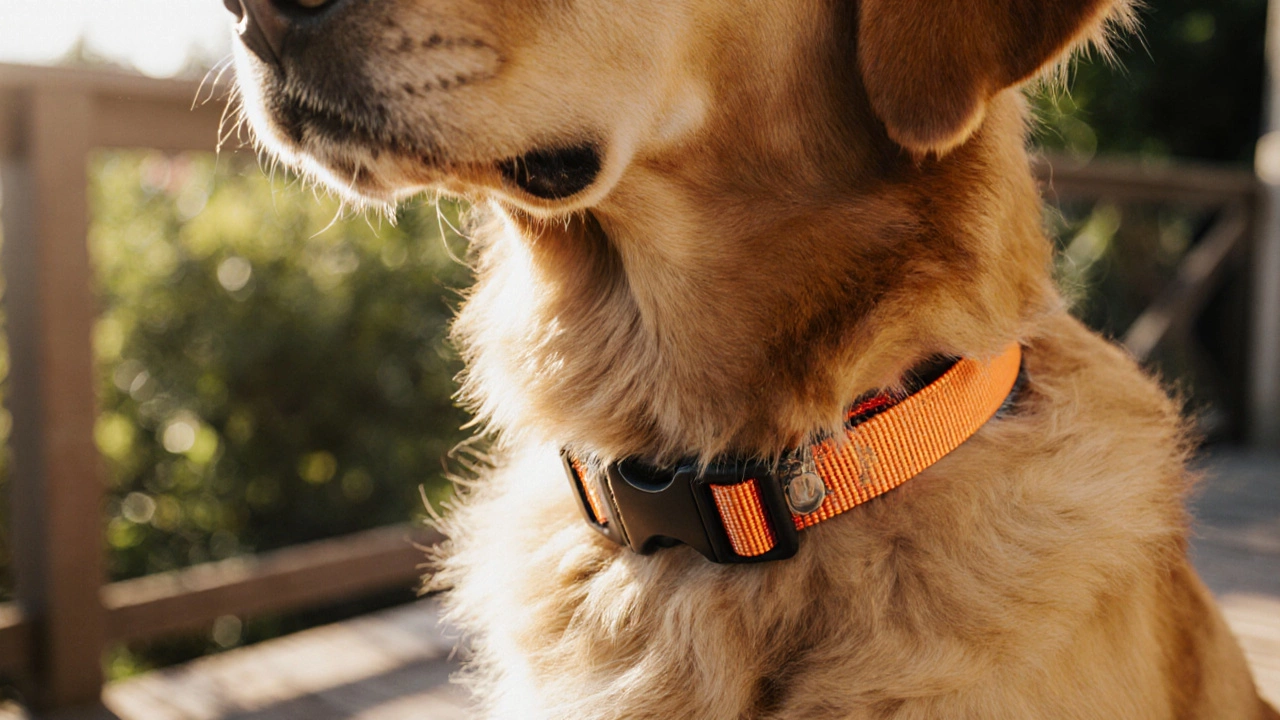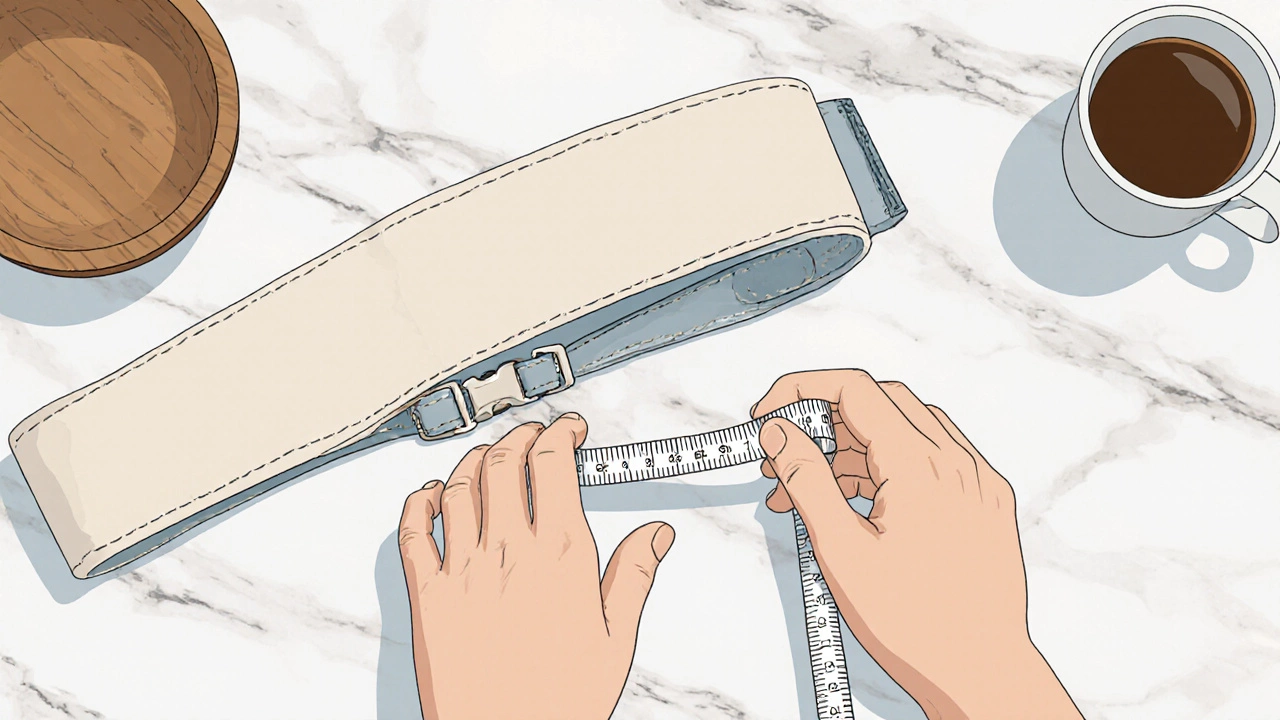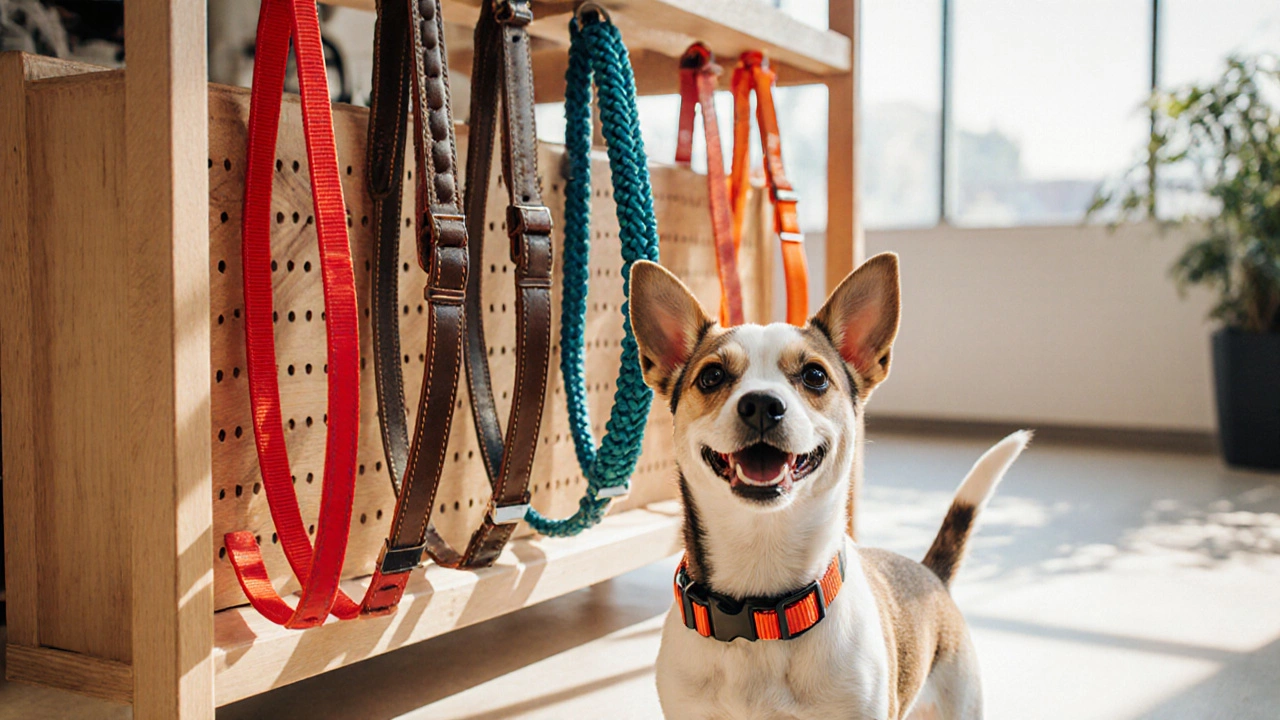
Dog Collar Replacement Calculator
Input Your Dog's Details
Why This Matters
Regular collar replacement prevents skin irritation, escape risks, and loss of identification. Collars wear faster with high activity, large breeds, and environmental exposure.
Recommended Replacement Interval
months
Based on your inputs
Replace this collar when you notice any of these warning signs:
- Frays, holes, or broken stitching
- Loose buckle or snap
- Stiff material or mildew smell
- Doesn't fit snugly (2 fingers should fit underneath)
When it comes to keeping your dog safe and comfortable, the humble collar often goes unnoticed-until it starts to fray, stretch, or lose its snap. Knowing dog collar replacement timing isn’t just about aesthetics; it’s a matter of health, safety, and preventing surprise trips to the vet.
Why Replacing a Collar Matters
Every time your furry friend pulls on a leash, the collar bears a tiny amount of stress. Over weeks and months that stress adds up, especially for active breeds that love to explore. A worn‑out collar can:
- Slip off, letting a dog wander off.
- Chafe the skin and cause infections.
- Fail to hold ID tags, compromising emergency identification.
Veterinarians often report skin irritations that trace back to a collar that’s too tight, too loose, or made from a material that no longer breathes. That’s why regular checks and timely replacement are essential.
Key Signs Your Collar Needs a Change
Below are the most common wear indicators. If you spot any of them, it’s time to retire the old collar.
- Collar wear signs such as fraying, holes, or broken stitching.
- The metal buckle or plastic snap no longer clicks securely.
- The material has become stiff, faded, or smells of mildew after a wash.
- It no longer fits snugly-your dog can slip it over the head or it leaves deep indentations.
Factors That Influence Collar Longevity
Not all collars age at the same rate. Consider these variables when estimating replacement intervals.
- Nylon dog collar is lightweight and dries quickly but can melt in hot car interiors.
- Leather dog collar ages gracefully with proper conditioning but may crack if exposed to excessive water.
- Breed and size: Large, powerful breeds (e.g., German Shepherds) exert more force on the collar than a tiny Chihuahua.
- Activity level: Working dogs, hikers, and swimmers put extra wear on stitching and buckles.
- Environmental exposure: Sun, rain, and salty sea air degrade materials faster.

General Replacement Guidelines by Material
| Material | Typical Lifespan (Months) | Best‑Fit Use Cases |
|---|---|---|
| Nylon | 12‑18 | Everyday walks, rainy climates (quick‑dry) |
| Leather | 24‑36 | Calm dogs, low‑impact activities, fashion‑focused owners |
| Martingale | 18‑24 | Hounds and breeds with necks wider than heads |
| Breakaway | 12‑15 | Dogs that roam freely outdoors (safety release) |
| Adjustable | 12‑18 | Puppies growing quickly or dogs that gain/lose weight |
These are averages; individual collars may need replacement sooner if they show any of the wear signs listed earlier.
Step‑by‑Step: How to Inspect Your Dog’s Collar
- Lay the collar flat on a clean surface.
- Check the stitching along the edge for any gaps or loose threads.
- Pull the buckle or snap to ensure it fastens with a solid click.
- Feel the interior for rough spots that could irritate skin.
- Measure the length: it should sit comfortably 1‑2 inches snug against the neck, allowing two fingers to slide underneath.
If any step reveals a problem, note it and order a new collar that matches the required dimensions.
Choosing the Right Replacement Collar
When you head to a pet store or browse online, keep these criteria in mind.
- Fit: Use a flexible measuring tape around the base of your dog’s neck, then add 1‑2 inches for comfort.
- Material: Match the collar to your dog’s activity level and the climate you live in.
- Safety features: For dogs that slip out of regular collars, consider a breakaway collar that releases under pressure.
- Identification: Ensure there’s a sturdy D‑ring for tags and a space to engrave a microchip number.
Many retailers offer a 30‑day return window, so you can test the fit at home before committing.

Real‑World Examples: When Owners Got It Right (and Wrong)
Emily from Auckland noticed her labrador’s collar was fraying after a summer of beach walks. She replaced the nylon dog collar with a waterproof version that promised a 24‑month lifespan. Six months later, the collar still looked brand new, and her dog never suffered a skin irritation.
Conversely, Mark kept his terrier’s leather collar for three years without conditioning it. The leather cracked, the buckle snapped, and the dog developed a small wound on the neck. A quick visit to the veterinarian resulted in a replacement with an adjustable nylon collar that fit better and avoided further injury.
Quick Checklist for Collar Care
- Inspect weekly for fraying, broken buckles, or loss of elasticity.
- Wash according to material guidelines (hand‑wash nylon, leather conditioner for leather).
- Replace every 12‑36 months depending on material and usage.
- Always keep a spare collar on hand for emergencies.
Frequently Asked Questions
How often should I replace a puppy’s collar?
Puppies grow quickly, so an adjustable collar is ideal. Check the fit weekly and replace the entire collar every 6‑12 months, or sooner if it shows wear.
Can I wash my dog’s collar in the washing machine?
Most nylon collars are machine‑safe on a gentle cycle, but always remove metal buckles first. Leather collars should never go in a washer; instead, wipe them clean and apply a leather conditioner.
What’s the difference between a martingale and a regular flat collar?
Martingale collars have a sliding loop that tightens slightly when the dog pulls, preventing escape without choking. Flat collars are simply a band and rely on proper sizing to stay on.
Is a breakaway collar safe for everyday walking?
Breakaway collars are designed for dogs that play off‑leash in areas with heavy vegetation or wildlife. For daily walks on a leash, a sturdy flat or martingale collar offers more control.
How can I tell if a collar is too tight?
You should be able to slip two fingers comfortably between the collar and your dog’s neck. If you see red marks after a walk, it’s a clear sign the collar is too tight.
Keeping an eye on your dog’s collar lifespan protects both health and peace of mind. A quick weekly check and a sensible replacement schedule mean fewer vet visits and a happier pet.





